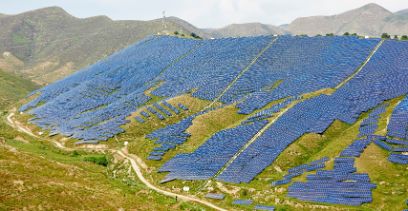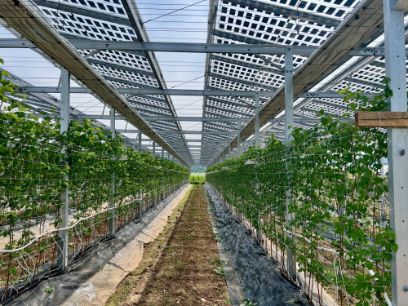- Story
Three good reasons for Alpine PV systems – and four against
11.03.2024 Since the energy shortage in winter 2022, photovoltaic systems high in the Alps have been repeatedly discussed as an option for bringing about the energy transition. We show what speaks in favour and what speaks against large-scale solar projects in the mountains.
Since the autumn of 2022, the call for Alpine photovoltaic systems has been impossible to ignore. With the start of the armed conflict in Ukraine in the spring, the sanctions imposed by Western Europe against Russia and the immediate threat that Russia could restrict its gas supplies to Europe, fears arose for the first time since the Second World War that Switzerland too could run out of electricity.
Emotionally charged Solar Offensive
This electricity shortage scenario would have had grave consequences for businesses, households and people in Switzerland. To avert this, the federal government has launched a series of drastic measures. This includes the ‘Solar Offensive’. When parliament brought the Solar Offensive into force on 1 April 2023, this set the gold rush spirit in the mountains in full swing.

The debate about Alpine PV installations was also an emotionally charged one from the outset. “Run on Alpine locations in Graubünden” was the headline in the Tagesanzeiger, “Nobody wants to miss the boom” in the NZZ. Today, now that some time has passed since the launch of the Solar Offensive, a different, more sobering view of the idea of Alpine PV plants is emerging.
BFH solar experts Christof Bucher and Dominik Füglistaller take an objective look at the topic. Based on our discussions with them, we have listed and explained the advantages and disadvantages of Alpine photovoltaic systems.
Pros: Advantages of alpine solar installations
Few options
Switzerland wants to become more independent and sustainable in terms of its energy supply. At the same time, the options are relatively limited when it comes to restructuring the energy supply: nuclear power is not well accepted by society; traditional power plants are not sustainable; wind energy is controversial depending on the location; and hydropower can only be expanded to a limited extent. Thus, large solar power plants in the Alps are a welcome option for producing sustainable electricity on a large scale in the future.
Valuable winter electricity
Another advantage of Alpine PV systems is that a solar module at high altitude produces around one-and-a-half times more energy over the year than a comparable module on the plains down below. And – this is crucial – Alpine PV systems supply around four to five times more electricity in winter than their lowland counterparts. This makes them relatively well suited to filling gaps in the winter electricity supply. In addition, the proportion of winter energy is also likely to be economically valuable.
More power quickly
The final and perhaps most important argument in favour of large solar power plants in the Alps is the possibility of adding a large amount of additional capacity relatively quickly. Unlike solar buildings on existing roofs, where the low renovation rate, conflicts of interest or a lack of willingness to invest can slow down expansion, large-scale alpine projects are attractive for new, financially strong investors with experience in the rapid realisation of large-scale projects. This means that Alpine photovoltaic systems accelerate the energy transition – in theory, at least.
The decisive factor will be the cost.

Cons: Disadvantages of alpine solar installations
New systems
Solar panels are normally installed on existing roofs. This minimises the amount of work required for the substructure of the panels. The situation is different for Alpine PV systems. These cannot be added anywhere, but have to be built from scratch.
High costs
The large amount of preparatory construction work, which has to withstand wind and weather in high alpine locations, makes Alpine PV systems expensive – both to build and to operate. Christof Bucher estimates that electricity from Alpine PV systems will therefore be two to four times more expensive than solar power from the lowlands.
Large space requirement
An Alpine PV system is required by law to produce yearly at least 10 gigawatt hours of electricity. Dominik Füglistaller reckons that around one hectare of land is needed to produce one gigawatt hour of solar power. A ‘small’ alpine solar power plant would therefore require 10 to 12 times the area of the pitch in Bern’s Wankdorf stadium.
Lack of acceptance
Their high cost and their impact on the local mountain environment, which many people find annoying, mean that public acceptance of Alpine solar power plants – unlike smaller, decentralised PV systems – is declining.
The Alpine solar power plant as a quick solution to the energy shortage is losing more and more of its original lustre among environmental associations, public donors and private investors. Christof Bucher assumes that individual Alpine solar power plants will be realised in the coming years. “However, the decisive factor will be the cost,” he is convinced. “In the end, solar power from the Alps will probably be too expensive and so will not be the big game-changer on the road to the energy transition.”
We don’t have very large land reserves.

Alternative: AgriSolar
This raises once again the question of what sustainable alternatives there are. With Agrivoltaics, the two researchers are jointly pursuing a potential solution: this involves agricultural land or greenhouses being used as usual for the production of fruit, berries or vegetables. At the same time, solar panels installed above the plants produce electrical energy, serve as protection from the sun, wind and weather, provide cooling, and can suppress pests, says Dominik Füglistaller, explaining the concept of agrivoltaics.

Cette affectation multiple particulièrement innovante a été rendue possible par la révision de l’ordonnance sur l’aménagement du territoire en 2022. «L’agrivoltaïsme est bien plus facile à mettre en œuvre que la construction de nouvelles installations en montagne», ajoute Christof Bucher, convaincu que la transition énergétique ne peut aboutir que si les infrastructures existantes sont mieux exploitées sur le plan de la production d’énergie solaire. La raison? «Nos réserves en termes de surface sont limitées.»
Category: Story


